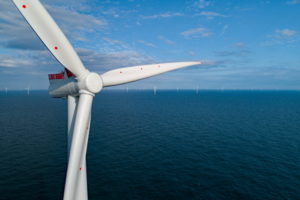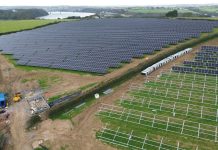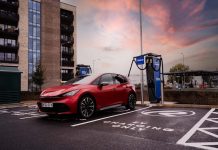ITM Power, Ørsted, Siemens Gamesa Renewable Energy, and Element Energy have been awarded €5 million in funding from The Fuel Cells and Hydrogen Joint Undertaking (FCH2-JU) under the European Commission to demonstrate and investigate a combined wind turbine and electrolyser system designed for operation in marine environments.

The FCH2-JU, a public private partnership of the European Commission, has awarded the consortium behind the OYSTER project €5 million to investigate the feasibility and potential of combining an offshore wind turbine directly with an electrolyser and transporting renewable hydrogen to shore. The consortium will develop and test a megawatt-scale fully marinised electrolyser in a shoreside pilot trial. The project will be coordinated by Element Energy.
To realise the potential of offshore hydrogen production, there is a need for compact electrolysis systems that can withstand harsh offshore environments and have minimal maintenance requirements while still meeting cost and performance targets that will allow production of low-cost hydrogen.
The electrolyser system will be designed to be compact, to allow it to be integrated with a single offshore wind turbine, and to follow the turbine’s production profile. Furthermore, the system will integrate desalination and water treatment processes, making it possible to use seawater as a feedstock for the electrolysis process.
The OYSTER project partners share a vision of hydrogen being produced from offshore wind at a cost that is competitive with natural gas (with a realistic carbon tax). The consortium says that this would unlock bulk markets for green hydrogen and have a meaningful impact on CO2 emissions, aiding the transition to a fully renewable energy system in Europe.
The project is planned to start in 2021 and run to the end of 2024. ITM Power is responsible for the development of the electrolyser system and the electrolyser trials, while Ørsted will lead the offshore deployment analysis, the feasibility study of future physical offshore electrolyser deployments, and support ITM Power in the design of the electrolyser system for marinisation and testing. Siemens Gamesa Renewable Energy and Element Energy are providing technical and project expertise.
Anders Christian Nordstrøm, vice president and head of Ørsted’s hydrogen activities, said: “Some sectors cannot decarbonise through electrification and that’s where renewable hydrogen could play a significant role. Offshore hydrogen production could be a future, supplemental way of getting large amounts of energy generated from offshore wind power to shore. We’re keen to better understand what it will take to produce renewable hydrogen offshore as a potential future supplement to production of renewable electricity. Having pioneered the offshore wind industry, we know that thorough analysis and testing are required before deploying new technologies at sea.”



